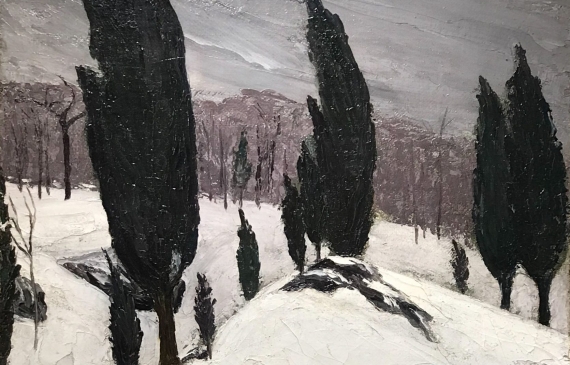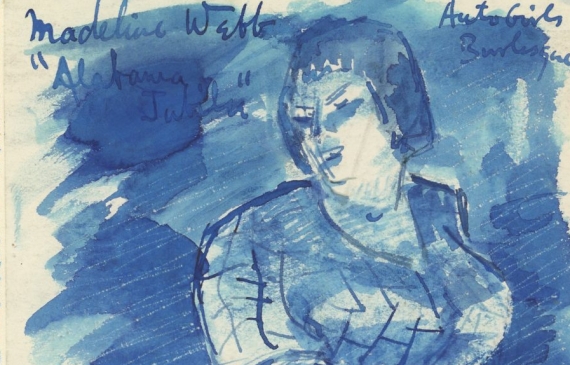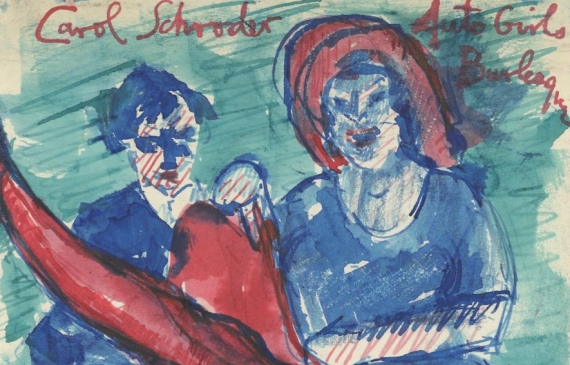
Henry Glintenkamp
American 1887 – 1946
Poplars in Winter, 1912
Oil on burlap
32 H. x 26 W. inches
Signed lower right: Glintenkamp
Provenance: Estate of the artist

Henry Glintenkamp
American 1887 – 1946

Henry Glintenkamp
American 1887 – 1946
The painter and illustrator Henry Glintenkamp (1887-1946) is known mainly for his anti-war illustrations that appeared in The Masses and other publications in the early twentieth century. As a painter, he was additionally successful, particularly in his landscape and urban scenes. Born in Augusta, New Jersey, the son of Hendrik and Sophie Dietz Glintenkamp, Henry received his elementary art training at the National Academy of Design (1903-06) before his study with Robert Henri the two years following. One student’s recollection of Henri’s classes, that of Helen Appleton Read, gives an indication as to the influence he effected on students such as Glintenkamp: “The old idea was to learn to draw the figure before the student had ideas. Henri’s idea was to have ideas first, paint pictures, make compositions, which is the same thing; learn to draw as you go along. He taught us to paint from the inside out so to speak, try to find out that inner thing that made one particular man or woman different from any other man or woman. (William Innes Homer, 1969, p. 150).